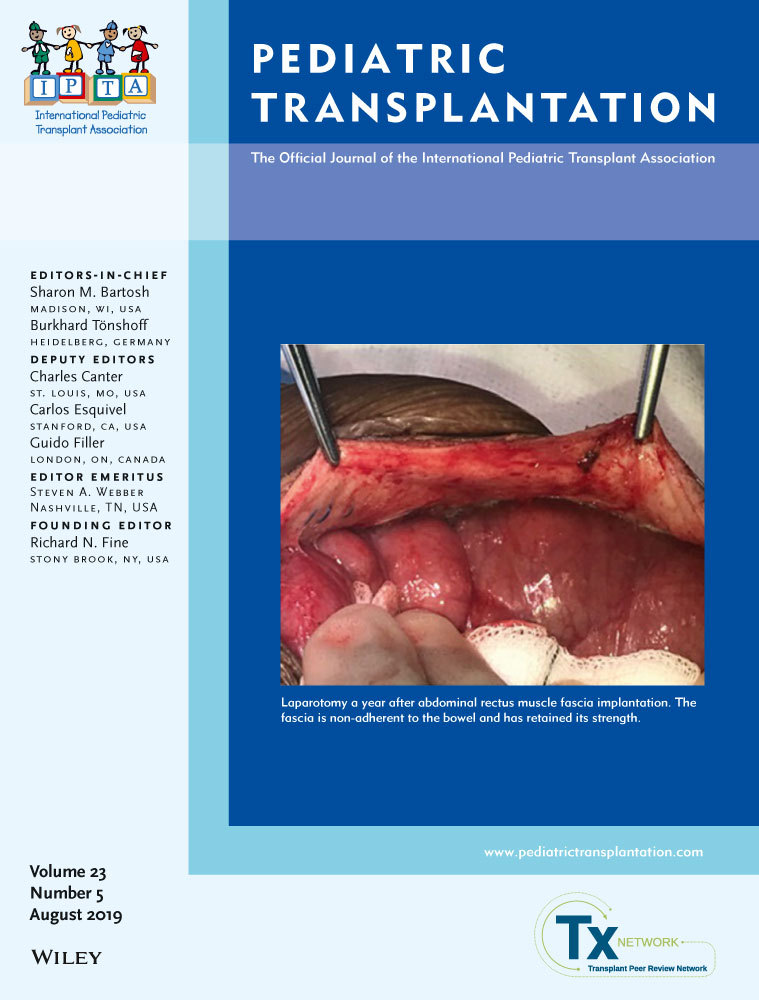IVC angioplasty using an autologous vascular graft for IVC stenosis due to metallic stent in a pediatric liver transplant
Abstract
A 12-year-old girl underwent LDLT using a left lobe graft for hepatic dysfunction associated with citrin deficiency. A continuous anastomosis suture technique was performed between the recipient's IVC and the donor's left hepatic vein. At age 14, the patient developed intractable ascites. Venography of the IVC and hepatic vein showed twisted-shape stenosis of the hepatic vein-IVC anastomosis with intravascular pressure gradient, probably due to the enlarged transplanted liver, for which a metallic stent was placed. The ascites disappeared, and the patient was making satisfactory progress eight months after surgery. However, nine months after surgery, the ascites appeared again with edema in the lower extremities. Since the stent that had been inserted was suspected of hampering the outflow of the graft liver and IVC, it was decided to conduct stent removal and IVC angioplasty. After intravascular exploration, the stent was removed. Angioplasty was performed. An autologous vascular graft patch was designed to be wedge-shaped to fit the incised part of the IVC, and it was sutured with 5-0 non-absorbable surgical sutures using a continuous suture technique. No postoperative complications or perioperative graft dysfunction were observed. The ascites decreased markedly, and the edema in the lower extremities disappeared. Thus, we were able to successfully perform IVC angioplasty using an autologous vascular graft patch in a patient who developed IVC stenosis after stenting. This procedure is one of the most effective treatment options, especially for pediatric patients requiring long-term vascular patency.
CONFLICTS OF INTEREST
Authors declare no conflict of interest for this article.




